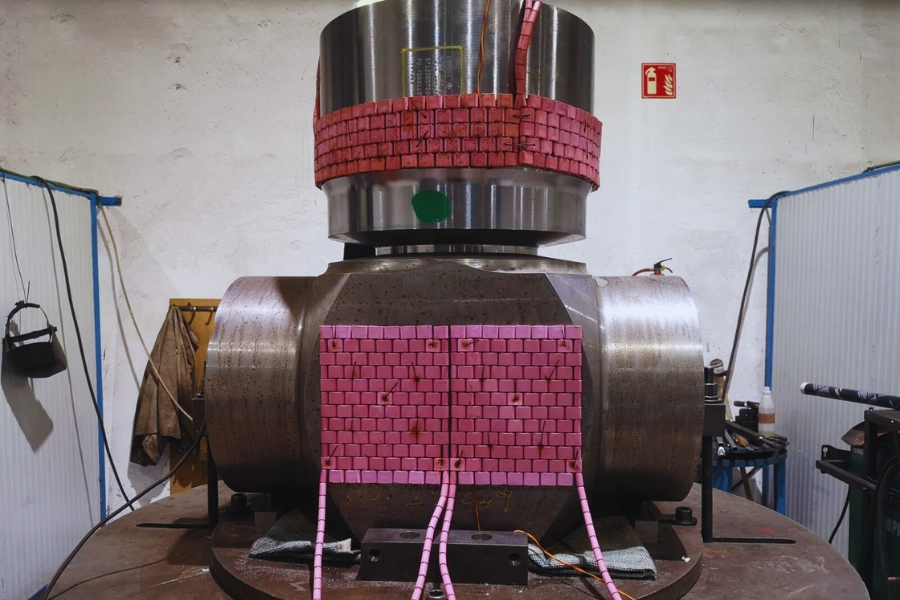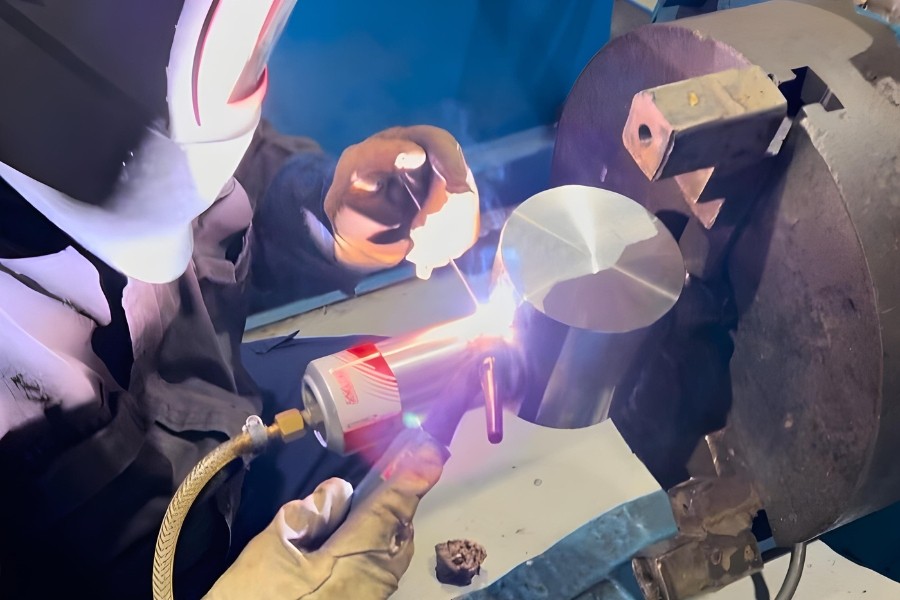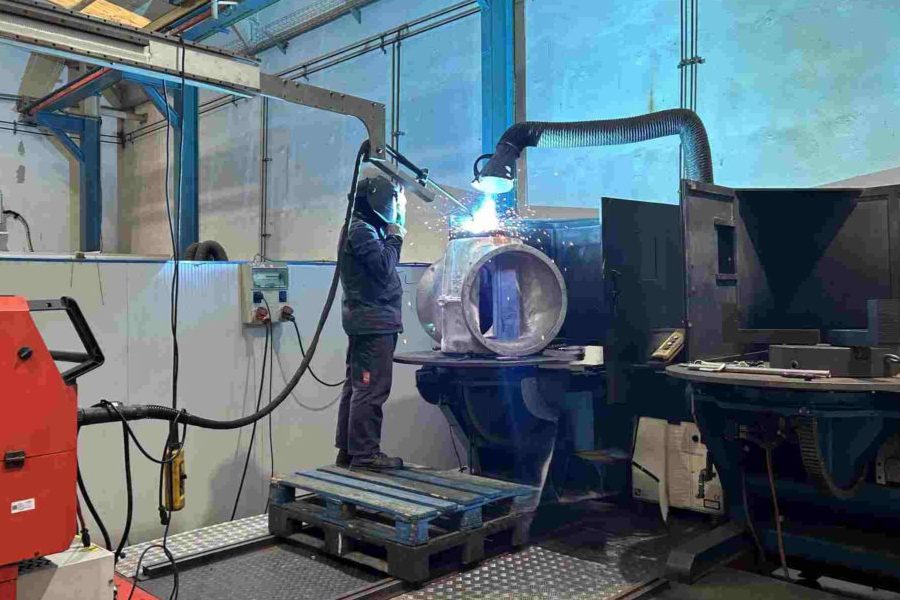Plasma Transferred Arc Welding, PTA: What it is, benefits, applications and technology for critical components
Plasma Transferred Arc Welding, PTA: What it is, benefits, applications and technology for critical components
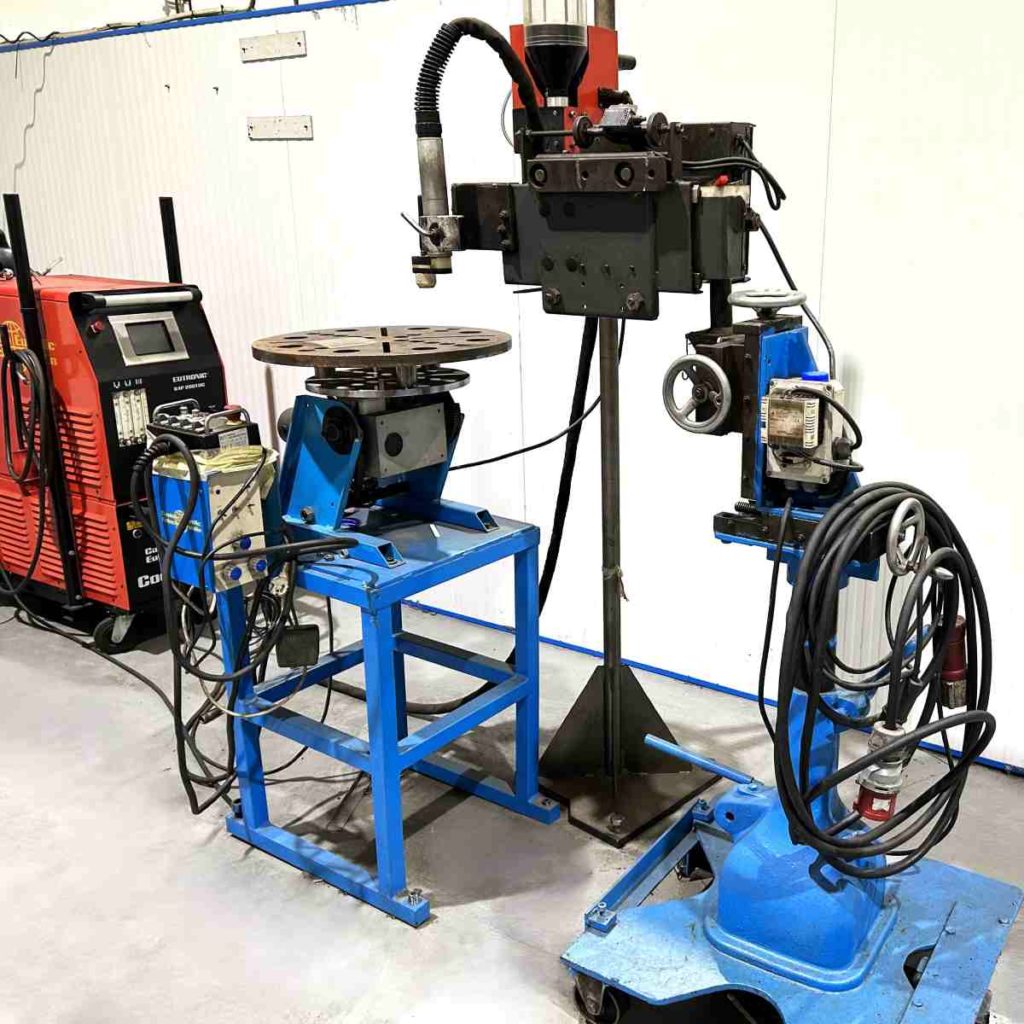
What is plasma-transferred arc welding (PTA)?
Plasma Transferred Arc (PTA) welding is an advanced technology that has become the preferred choice for industrial applications requiring high precision, durability, and resistance.
PTA welding is a thermal process that employs a highly concentrated plasma arc to melt and transfer filler material onto a base surface. This procedure is exceptionally precise, enabling the application of metallic coatings with high resistance to wear, corrosion, and heat. Through PTA welding, the amount of filler material deposited can be controlled with great accuracy, minimizing waste and improving process efficiency. Compared to other welding methods, PTA offers deeper penetration and more uniform coatings, resulting in more durable and resilient components essential for industries utilizing industrial pumps and valves.
At Asimer Group, we have implemented this technique to deliver optimal solutions for the manufacturing and repair of critical components such as industrial pumps, valves, and compressors. Below, we explore what PTA welding is, its benefits, applications, comparisons with other methods, and how to select the right equipment for this process.
How does plasma PTA arc transfer welding work?
The PTA welding process operates by creating an electric arc between a tungsten electrode and the base material. This arc generates high-temperature plasma, which is channeled through a nozzle and used to melt the filler material (metal powder or wire) that is deposited onto the surface of the component.
This precise control of the plasma arc and filler material ensures that the coating is applied only where needed, enhancing weld quality and reducing the risk of part distortion. To guarantee proper sealing and prevent any seepage , we perform non-destructive testing, such as liquid penetrant inspection, allowing us to detect any imperfections before completing the process.
Benefits of plasma-transferred arc welding
The PTA welding process offers multiple advantages for the industry, especially when components need to withstand extreme conditions. Here are some of the key benefits this method provides:
Improved durability and strength
One of the main benefits of PTA welding is its ability to apply coatings that significantly improve components' resistance to wear, corrosion and extreme temperatures. This is critical for industrial pumps and valves operating in harsh environments, such as petrochemical plants, chemical or power generation plants.
High accuracy
in the process
The accuracy of the plasma arc in PTA welding allows a controlled and uniform application of the filler material. This ensures a clean finish, minimising the need for subsequent adjustments and reducing the risk of warping on parts, ensuring better performance in CNC machining and precision in CNC machining.
Wear reduction
In components subjected to high friction or abrasive conditions, such as pump shafts or butterfly valves, PTA welding allows protective coatings to be applied which increase the service life of the parts. This not only reduces maintenance costs, but also improves operational efficiency.
Material flexibility
PTA welding can be used with a wide variety of materials, including cobalt, nickel, and iron alloys, allowing the process to be tailored to the specific needs of each component and industrial sector. Additionally, at Asimer Group, we employ chip removal machining for complex components.
Improved Durability and Strength
One of the main benefits of PTA welding is its ability to apply coatings that significantly improve components' resistance to wear, corrosion and extreme temperatures. This is critical for industrial pumps and valves operating in harsh environments, such as petrochemical plants, chemical or power generation plants.
High process accuracy
The precision of the plasma arc in PTA welding allows a controlled and uniform application of the filler material. This ensures a clean finish, minimising the need for subsequent adjustments and reducing the risk of warping on parts, ensuring better performance in CNC machining and precision in CNC machining.
Reduced wear
In components subjected to high friction or abrasive conditions, such as pump shafts or butterfly valves, PTA welding allows protective coatings to be applied which increase the service life of the parts. This not only reduces maintenance costs, but also improves operational efficiency.
Material flexibility
PTA welding can be used with a wide variety of materials, including cobalt, nickel, and iron alloys, allowing the process to be tailored to the specific needs of each component and industrial sector. Additionally, at Asimer Group, we employ chip removal machining for complex components.
Applications of PTA welding in industrial pumps and valves
At Asimer Group, we use PTA welding in machining projects for large-scale valves and high-capacity pumps that operate in critical environments. Here are some of the most common applications.
Coating of critical surfaces in pumps
Industrial pumps, especially those handling abrasive or corrosive fluids, require durable coatings that extend their service life. PTA welding enables the coating of critical surfaces, such as pump shafts, with materials that provide superior protection against wear and corrosion, making them ideal for centrifugal pump components.
Improvement of industrial valves
Butterfly valves and other types of industrial valves benefit from the precision and durability offered by PTA welding. By applying protective coatings to high-wear areas, such as valve seats, their performance is enhanced, and their service life is extended, reducing the need for replacements and maintenance. Additionally, the use of advanced measuring instruments ensures the accuracy of each job.
Worn component repair
One of the most common uses of PTA welding is the repair of worn components. Instead of replacing entire parts, we can restore damaged sections by applying filler material only to the affected areas, bringing the components back to their original operational state. In this process, the use of a measuring arm is crucial to ensure the accuracy of the repairs.
Coating of critical surfaces in pumps
Industrial pumps, especially those handling abrasive or corrosive fluids, require durable coatings that extend their service life. PTA welding enables the coating of key surfaces, such as pump shafts, with materials that provide superior protection against wear and corrosion, making them ideal for centrifugal pump components.
Improvement of industrial valves
Butterfly valves and other types of industrial valves benefit from the precision and durability offered by PTA welding. By applying protective coatings to high-wear areas, such as valve seats, their performance is enhanced, and their service life is extended, reducing the need for replacements and maintenance. Additionally, the use of advanced measuring instruments ensures the accuracy of each job.
Repair of worn components
One of the most common uses of PTA welding is the repair of worn components. Instead of replacing entire parts, we can restore damaged sections by applying filler material only to the affected areas, returning the components to their original operational state. In this process, the use of a measuring arm is crucial to ensure the accuracy of the repairs.
Comparisons with other welding methods

PTA Welding vs.
MIG
Welding
MIG welding (Metal Inert Gas) is ideal for fast welds on large surfaces but lacks the precision offered by PTA welding. Additionally, automatic MIG welding is more susceptible to thermal distortions, whereas PTA welding, thanks to its temperature control, allows for more precise welding with minimal distortion.

PTA Welding vs. TIG
Welding
Although TIG welding (Tungsten Inert Gas) also offers a high level of precision, PTA welding stands out for its ability to apply protective coatings to critical components, something that is not as efficient with TIG. This differences between TIG and MIG welding is crucial in industrial applications.

PTA Welding vs. Submerged ARC WELDING
Submerged arc welding is suitable for large-scale welding projects that do not require a high level of precision. However, for critical components such as pumps and valves, PTA welding is preferable due to its ability to control the application of filler material in specific areas and its superior resistance to wear and corrosion, making it ideal for sectors such as oil refining and fittings in the oil and gas industry.

How to choose a suitable PTA welding machine
Choosing the right PTA welding machine is a crucial step to ensure an efficient and high-quality process. Here are some key factors to consider.



Power and temperature control
It is essential that the machine allows for precise control of the power and temperature of the plasma arc. This is especially important when working with delicate materials or when precise finishing is required, guaranteed in a metrology room.
Compatibility with filler materials
Machines must be compatible with a wide range of filler materials. Versatility is an important factor in PTA welding, as each project may require different types of alloys.
Ease of use and maintenance
Choose machines that are easy to operate and require minimal maintenance. PTA welding machines are often complex, so ease of use is key to avoiding errors during the welding process.
Size and configuration
Depending on the scale of the projects we are working on, machine size and configuration are also factors to be taken into account. For work on large parts, such as industrial pumps, we use a Trevisan machining center to handle large components without problems.

How to choose a suitable PTA welding machine
Choosing the right machine for PTA welding is a crucial step to ensure an efficient and high-quality process. Here are some key factors to consider.
Power and temperature
control
It is essential that the machine allows for precise control of the power and temperature of the plasma arc. This is especially important when working with delicate materials or when precise finishing is required, guaranteed in a metrology room.
Compatibility with filler materials
Machines must be compatible with a wide range of filler materials. Versatility is an important factor in PTA welding, as each project may require different types of alloys.
Eease of use and maintenance
Choose machines that are easy to operate and require minimal maintenance. PTA welding machines are often complex, so ease of use is key to avoiding errors during the welding process.
Size and configuration
Depending on the scale of the projects we are working on, machine size and configuration are also factors to be taken into account. For work on large parts, such as industrial pumps, we use a Trevisan machining center to handle large components without problems.
Considerations for the implementation of PTA welding
Despite its advantages, implementing PTA welding requires specialized equipment and trained personnel. PTA welding machines are more complex than traditional welding systems, and their operation demands an in-depth understanding of both the equipment and the materials used. This level of precision is crucial for applications in sectors such as cryogenics, desalination, water treatment, and pulp and paper.
Careful control of welding parameters such as arc intensity, travel speed, and shielding gas flow is essential to ensure proper coating application. Moreover, proper surface preparation of the workpiece is crucial to achieving strong coating adhesion, especially in Industry 4.0 environments.
Challenges and future of PTA welding
As with any advanced technology, PTA welding faces certain challenges. One of the main challenges is the initial cost of the equipment, which can be higher compared to more conventional welding methods. However, in the long run, the benefits in terms of component durability and reduced maintenance costs outweigh this initial investment.
The future of PTA welding looks promising, as industries continue to seek more efficient and durable solutions for the manufacturing and repair of critical components. Ongoing research and development in new filler materials are also expanding the possibilities of PTA welding, making it even more versatile and effective for industrial applications.
Innovation and technology at Asimer Group
At Asimer Group, we take pride in offering customized PTA welding solutions to meet the specific needs of our clients. We have state-of-the-art equipment and a team of skilled professionals who ensure that every project meets the highest quality standards. Our extensive experience in the industrial sector allows us to efficiently apply PTA welding to critical components such as pumps and valves, ensuring optimal performance even under demanding conditions.
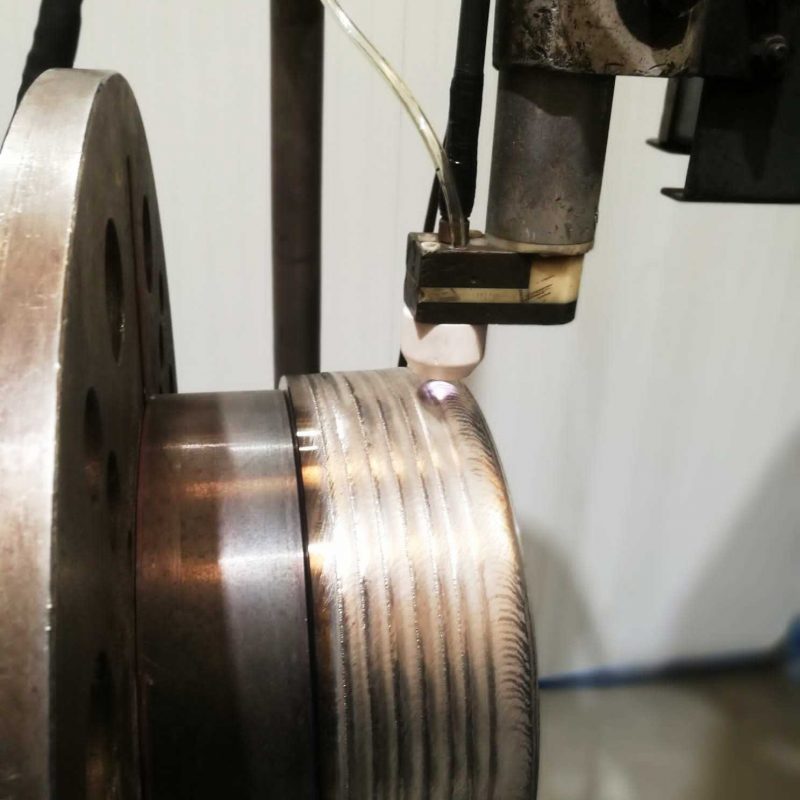
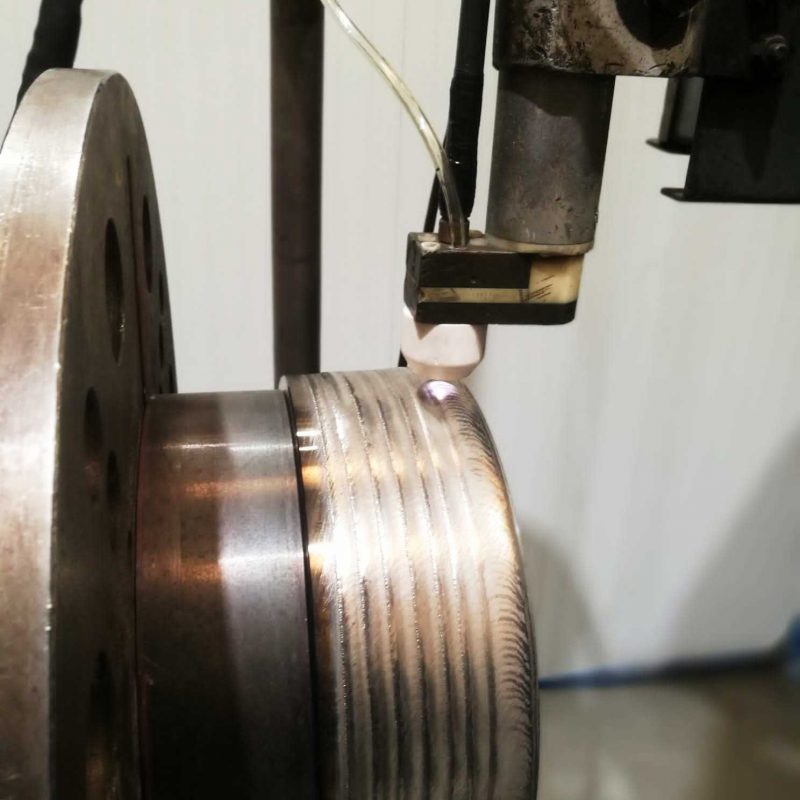
Innovation and technology at Asimer Group
At Asimer Group, we take pride in offering customized PTA welding solutions to meet the specific needs of our clients. We have state-of-the-art equipment and a team of skilled professionals who ensure that each project meets the highest quality standards. Our experience in the industrial sector allows us to efficiently apply PTA welding to critical components such as pumps and valves, ensuring optimal operation under demanding conditions.
Why choose PTA welding for your industrial components?
Plasma Transferred Arc (PTA) welding is essential for the manufacturing and repair of industrial components that require precision, durability, and resistance. At Asimer Group, we have perfected this technique to guarantee high-quality solutions for our clients. If your company is looking to enhance the durability of its pumps or valves, or needs a reliable partner for the repair of critical components, Asimer Group is your best choice. With advanced technology and an unwavering commitment to quality, we ensure results that will meet and exceed all your expectations.

